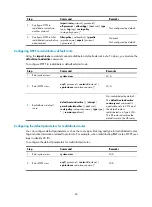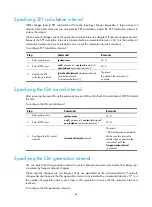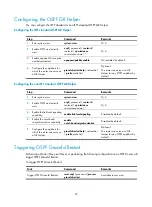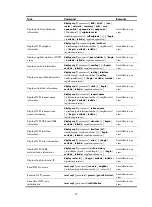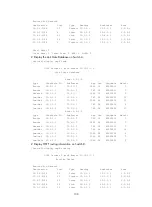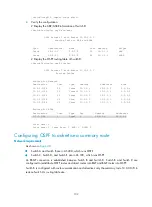
92
Setting the DSCP value for OSPF packets
An IPv4 packet header contains an 8-bit TOS field. As defined in RFC 2474, the first six bits set the
Differentiated Services Code Point (DSCP) value and the last two bits are reserved. Network devices use
the DSCP value as a reference to determine the packet priority for transmission.
You can set the DSCP value for OSPF packets.
To set the DSCP value for OSPF packets:
Step Command
Remarks
1.
Enter system view.
system-view
N/A
2.
Enable an OSPF
process and enter
OSPF view.
ospf
[
process-id
|
router-id
router-id
|
vpn-instance
vpn-instance-name
] *
By default, OSPF is not enabled.
3.
Set the DSCP value
for OSPF packets.
dscp
dscp-value
Optional.
By default, the DSCP value in OSPF
packets is 48.
Enabling OSPF ISPF
When a network topology is changed, Incremental Shortest Path First (ISPF) allows the system to
recompute only the affected part of the shortest path tree (SPT), instead of the entire SPT.
To enable OSPF ISPF:
Step Command
Remarks
1.
Enter system view.
system-view
N/A
2.
Enter OSPF view.
ospf
[
process-id
|
router-id
router-id
|
vpn-instance
vpn-instance-name
] *
N/A
3.
Enable OSPF ISPF.
ispf enable
Optional.
Disabled by default.
Configuring OSPF FRR
When a link fails, the packets on the link are discarded, and a routing loop may occur until OSPF
completes routing convergence based on the new network topology.
You can enable OSPF fast reroute (FRR) to solve this problem.
Figure 37
Network diagram for OSPF FRR






